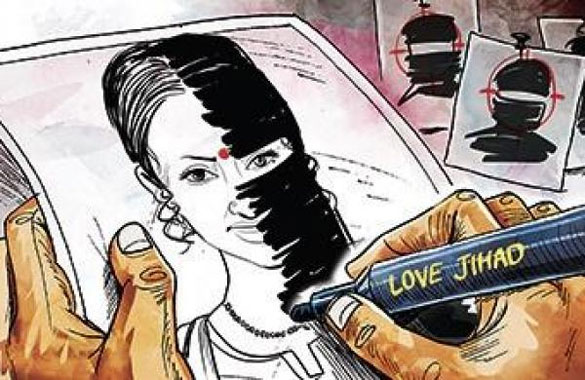
By S. Arshad, New Age Islam
19 December 2020
The UP government has recently promulgated an ordinance called Prohibition of Unlawful Conversion Bill 2020 apparently to stop marriages driven by the motive of 'Love Jihad' though the term itself is ambiguous and coined by Islamophobic and anti-Muslim sections of the society.

For a long time, the Islamophobic section of Indian society is running a campaign against "Love Jihad" creating the impression among the majority community that Muslims are deliberately converting Hindu girls into Islam by luring them to marriage and that this will lead to a demographic change in the country in the long run though in no interfaith marriages between Muslim men and Hindu women coercion or use of force or pressure was found on investigation.
India has always been a multicultural and multi-ethnic society where members of various religions and ethnicities live in close contact. And interfaith marriages do take place as a result of this contact. These interfaith marriages take place between members of all the religions, not only between Muslim men and Hindu women. But for the last few years the theory of "Love Jihad" has been circulated and propagated by the media and Islamophobic sections so much that people started believing that only Muslim men marry Hindu women for converting them to Islam. For this, every marriage between a Muslim man and a Hindu woman was highlighted by the media. But the facts speak otherwise.

A survey jointly conducted on interfaith marriages by the University of Maryland and National Council of Applied Economic Research in 2013 reveals for the first time that the percentage of interfaith marriages among Muslims is the lowest and highest among Christians and Sikhs. The survey was conducted on women of 41, 554 households in 1503 villages and 971 villages across the country. It was found that only 2.21% women married outside their religion. Interfaith marriages are the highest among the Christian women at 3.5% followed by Sikh women at 3.2%. Hindu women marrying outside their religion are only at 1.5%. The Muslim women marrying outside their religion are only 0.6%.
Again, the survey reveals state-wise incidence of interfaith marriages. It shows that the Punjab has the highest incidence of interfaith marriages at 7.8%. Jharkhand comes next at 5.7 followed by Andhra Pradesh at 4.9%. Interestingly, a culturally more liberal state like West Bengal has the lowest incidence of interfaith marriage at only 0.3% though the Muslim population in the state is 30%.

Punjab has a majority population of Sikhs and therefore interfaith marriages obviously happen between Sikhs and Hindus probably due to similarities in religious practices. But the theory of Love Jihad against Sikhs is not propagated. If the Muslims had been running "Love Jihad campaigns deliberately, the incidence of interfaith marriages would have been the highest in West Bengal where Muslims form 30% of the total population. But the fact that here the interfaith marriages are only 0.6% is a testimony to the fact that the theory of "Love Jihad" is a figment of imagination of Islamophobic mind and to tarnish the image of Muslims as religious fanatic.
Ironically, the states of Punjab, Andhra Pradesh and Jharkhand have not implemented Love Jihad Laws where the incidence of interfaith marriages is higher nor are Sikhs and Christians concerned at the highest incidence of interfaith marriage among their women because these communities believe in the personal freedom of their members and do not see it as a big threat to their religion.
New Age Islam, Islam Online, Islamic Website, African Muslim News, Arab World News, South Asia News, Indian Muslim News, World Muslim News, Women in Islam, Islamic Feminism, Arab Women, Women In Arab, Islamophobia in America, Muslim Women in West, Islam Women and Feminism

No comments:
Post a Comment